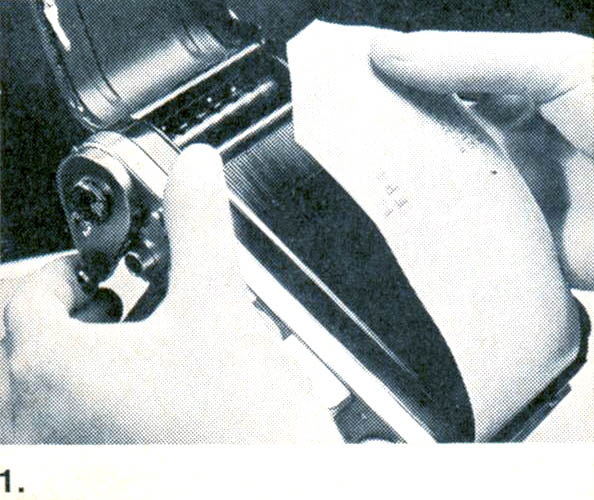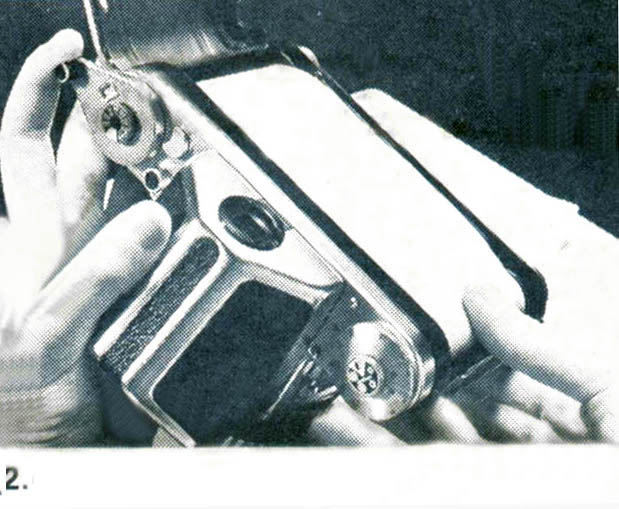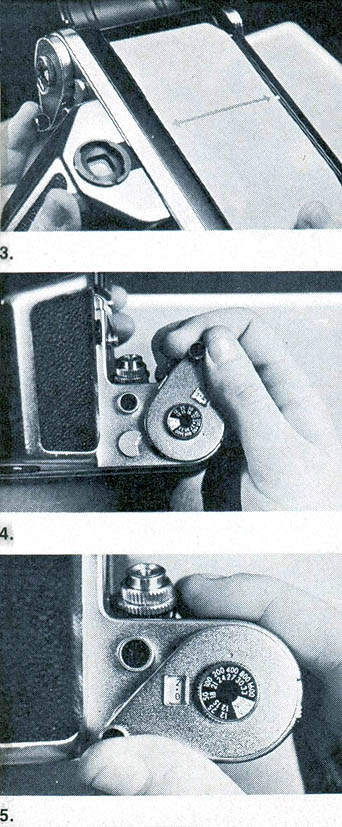Pentacon Six Mount Cameras
by TRA
Loading the Pentacon Six and
Exakta 66
Loading the Pentacon Six or Exakta 66 is not difficult. I find
it far easier to load than a Hasselblad (or Kiev 88!) film magazine.
But nor is it as easy as loading many 35mm cameras. Get the loading
wrong with any of these cameras, and you’re going to have problems, the
most common of which is overlapping frames. But having said that,
overlapping frames is not common at all, if the camera is loaded properly.
I am grateful to Ron Spillman for his permission to reproduce his article,
Snagless
Pentacon Loading, which was published in Modern Photography in October
1972. Here are Ron Spillman’s instructions:
 |
|
First of all, the camera, by any name, is a first rate
6 × 6cm (2 ¼ × 2 ¼ ) SLR – perfect in every respect
except for an abominable instruction manual. The loading procedure
itself is quite simple and reliable, but you won’t find it described correctly
in the manual. That little detail was lost somewhere in the translation
from German to English. Now a printed insert is included with every
new manual, supposedly clearing up the whole mess. But would you
believe this insert misses the whole point and just repeats, in better
English, the false information of the original?
So, for possibly the first and, hopefully, the last time,
here’s the proper way to load your Pentacon/Praktica 66/Praktisix.
Follow the words and pictures in order:
1) Wind the film advance lever all the way forward, BEFORE
threading the film, and hold it there. Now pull the film leader across
to the take-up spool.
|
 |
|
2) Rock the lever back and forth through about 45 degrees
to advance the film, but never let the lever spring back farther than shown
in this picture. Use the thumb of your other hand as a tensioner
to keep rolled film taut on take-up [and feed] spool.
[I sometimes put the thumb of my left hand on the edge
of the flat plastic top cap of the feed spool, instead of on the backing
paper, as shown in the illustration. This ensures that the film on
both spools is kept nice and tight. (Unlike in the illustration,
I operate the film advance lever with my right hand!)] |
 |
|
3) When arrows on paper backing are aligned with white
index spot, allow lever to return to parked position,
and close back of camera.
[NEVER release the lever and let it spring back; bring
it back gently to its rest position.]
[Fire the shutter!]
4. Wind the lever and fire the shutter three [more] times.
Don’t press the release while lever is in advanced position.
5. Wind the lever a fourth time to bring frame counter
to 1, that is, the dot between 0 and 2.
– RON SPILLMAN
|
Words in square brackets are mine. I have used these instructions
with every roll since I first bought a Pentacon Six in 1977, and use a
similar loading procedure with my Exakta 66. I carry a copy of the
instructions in the back of my camera case at all times. It is
possible to do this with only two hands, and keeping the tension on the
two spools is a very important part of it. If the film unrolls and
is loose, you WILL get overlapping frames. If it is taut, you WON’T
(unless the camera is faulty).
If your camera is faulty, a service from a repair person familiar with
the Pentacon Six / Exakta 66 should cure the problem. I recommend
Tom Page in England, Rolf-Dieter Baier in Germany and Hans Roskam in the
Netherlands. U.S. friends speak highly of the work of Trescam in
New Jersey, although – like many of the best repairers – there is usually
quite a slow turn-round time because of the amount of work he has.
If all this doesn’t work, get Rolf-Dieter Baier to fit his control unit,
which gives you a visual confirmation that you have advanced the film far
enough. You can contact him via his website (see my
Links
page).
To go back to the new loading instructions, click here.
To go back to the cameras page, click here.
To go back to the Frequently-Asked Questions page, click here.
To go on to the lens review, click below.
Lens review
To choose other options, click below.
Home
© TRA February 2002, November 2008


